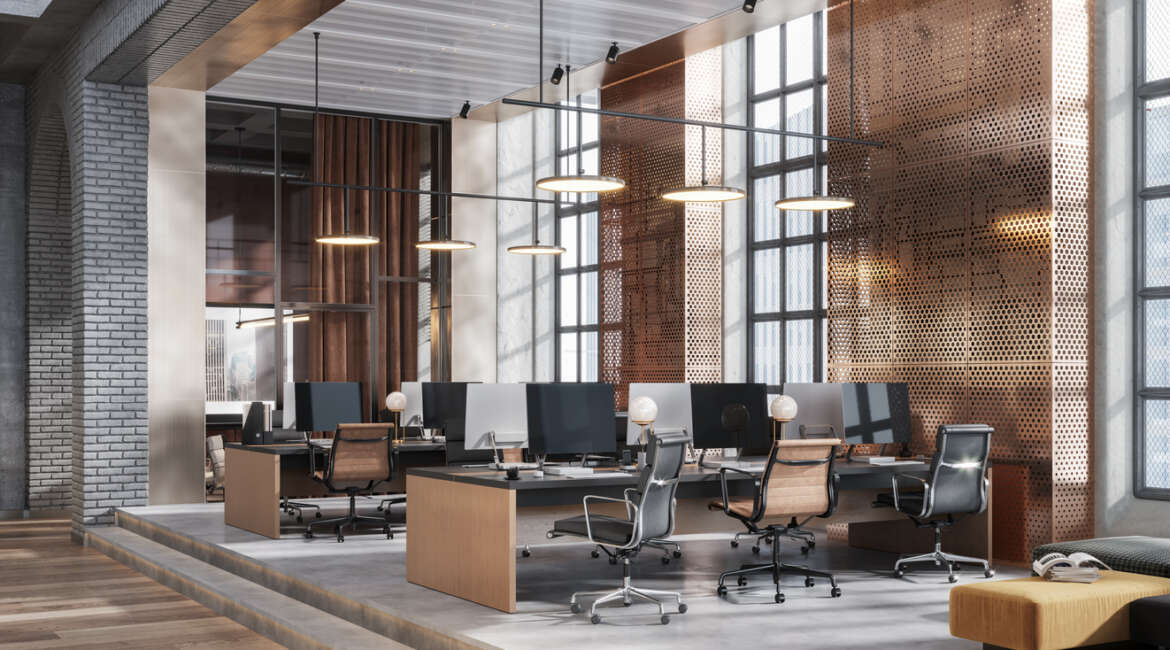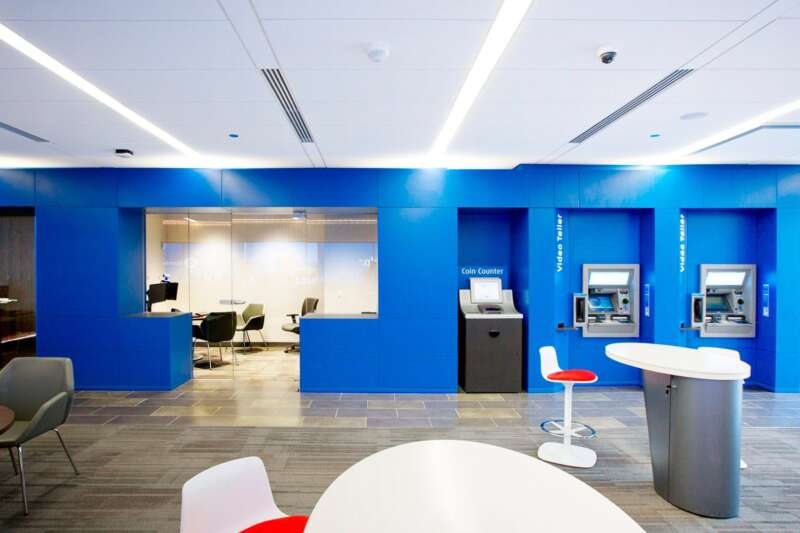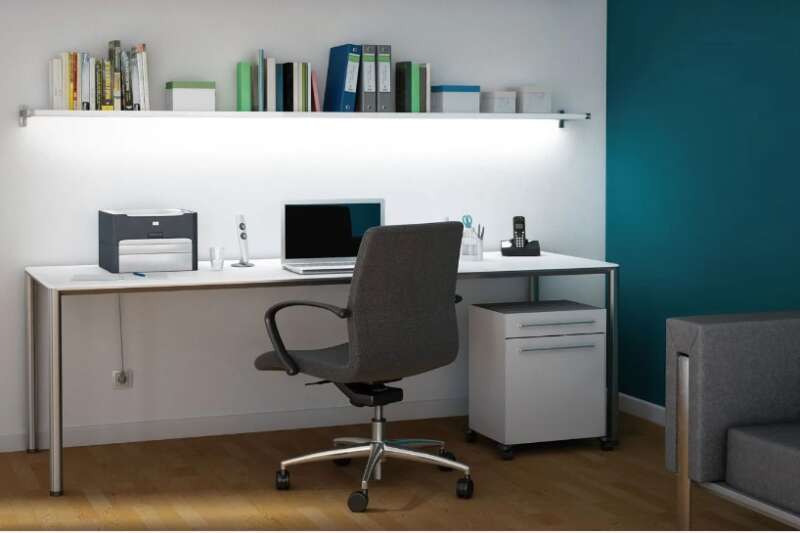Modern Office Lighting to boost productivity
Tips, types and regulations
The office is one of the places where we spend the most hours of the day, so it is very important to light the work area well. Office lighting influences your visual health and well-being at work. In the office, the right lighting boosts productivity, improves motivation and helps to reduce absenteeism.
Types of lighting in the office
Bearing in mind that in addition to achieving an attractive result, it is important to adapt office lighting to the time of day by combining these types:
1. Natural light
Sunlight is the best way to work easily and quietly without eyestrain. So if you can, you should always opt for as much natural light as possible.
If your office has large windows, we encourage you to make 100% use of this natural light. At certain times of the year, such as summer or spring, we know that it can be uncomfortable.
That is why we recommend that to keep out extremely direct light you can choose to use white blinds and translucent fabrics that allow the maximum amount of light to pass through but softening it.
2. General lighting
The general lighting provides uniform light throughout the workspace, which serves above all to avoid shadows and strong contrasts.
Luminaires can be placed both on ceilings and walls, depending on whether direct or diffused light is preferred or needed. Recessed downlights or LED tubes are some of the most commonly used luminaires along with track and spotlights.
3. Focal light
Focal lighting is one of the most commonly used types of office lighting. In every workstation it is important to have a slightly more intense and direct light that allows you to work comfortably and with sufficient visibility in each of the work areas.
Office luminaires of the focal type shine directly onto the surface of the desk or keyboard and are therefore usually pendant or flexo luminaires.
4. Decorative light
Decorative lighting aims to create a warm and pleasant atmosphere and to make a space more attractive by highlighting its shapes, colors and textures.
This type of office lighting is used in areas such as reception areas, where the aim is also to highlight specific elements or colors in order to emphasize the corporate aspect of these spaces.
This is where it is most common to use floor, suspension and linear lamps.
Tips for healthy office lighting
Healthy, convenient and comfortable office lighting is the first step towards greater productivity and, above all, the comfort of the people who work in each space. For this reason, bear in mind the following tips, which can be summarized in 9 points.
– Make the most of natural light.
– Distribute the light points according to the use of the space.
– Use luminaires with diffusers to avoid direct light.
– Combine general lighting with focused lighting.
– Choose quality, efficient LED lamps.
– Opt for white lights, between 3,000- and 4,000-degrees Kelvin.
– Achieve a light intensity of between 500 and 750 lux.
– Avoid excessive light.
– Install intelligent control system.
Lighting control
Lighting control systems are not only a great advantage, but also a necessity in office lighting in order to be able to adapt the light to the needs of the people in each part of the day.
With lighting control, convenience and lighting comfort are ensured. In addition, this means that the luminaires can be dimmed and controlled quickly and conveniently from a single point or even from different electronic devices.
Color temperature
Although the color temperature of the luminaires recommended for each space is different depending on the activities to be carried out, in offices it is necessary to maintain constant visual comfort and hygiene for the use of screens and for the correct performance of any work.
In this respect, office lighting should ideally be between 3,000- and 4,000-degrees Kelvin.
This is something that, together with the intensity of the light, can be easily controlled and regulated with lighting control systems.
Amount of light
In addition to the color temperature of the light, another important issue in office lighting is the amount and intensity of light. This is measured in lumens and lux.
Too much light can be uncomfortable for the eyes and too little light can lead to eyestrain and eyestrain fatigue from straining the eyes.
According to current regulations, offices must have a light intensity of between 500 and 750 lux to ensure visual comfort and adequate visibility to carry out daily work comfortably.
Office lighting regulations
Office lighting is determined and regulated by regulations, which establish a minimum level of illumination according to the visual requirements of each space.
Areas that are used occasionally should have at least 50 lux, while areas that are used throughout the working day should have 100 lux. And although a minimum of 25 lux is required in transit areas, this should be doubled if there is a risk of falling, collision or extra effort.
Taking these conditions into account will not only facilitate this, but will also allow you to get more out of your use of the lighting system.




